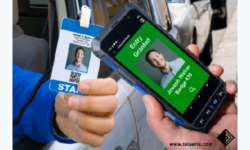Access Control Market Projected To Be Worth $15B in 2029
Adroit Market Research projects a 8.5% compound annual growth rate for the access control market from $10B to $15B from 2023 to 2029.

The access control market is worth about $10 billion this year and is projected to reach $15 billion in 2029, good for an 8.5% compound annual growth rate (CAGR), according to a new study from Adroit Market Research.
Adroit defines access control as “a tactic used to boost the security of any computing system by limiting who may access what resources,” adding it includes both logical and physical access.
“While logical access control integrates with system data, files, and computer networks, actual access control controls access to actual IT assets, buildings, and campuses,” according to the Adroit research. “Scalability, flexibility, and remote administration capabilities are all offered by cloud-based access control solutions.”
Web-based interfaces “enable access control services to be accessed and managed by organizations, negating the need for on-site infrastructure and maintenance,” the report says.
Access control “increased in scope as computer networks and digital systems developed, adding electronic techniques for authentication and permission,” according to the research. “Usernames, passwords, and cryptographic keys are used by digital access control services to verify user identities and authorize access to computer networks, software, and data.”

More About the Future of the Access Control Market
Emerging technologies may be incorporated into access controls to improve security and user experience, the findings show. For instance, combining access control with AI and ML algorithms can make improved threat identification, anomaly detection, and behavior-based access control possible.
Better monitoring and control abilities may be provided by integrating access control with Internet of Things (IoT) devices. New prospects in the access control business may be unlocked by investigating and making investments in these developing technologies.
Cloud-based access control solutions are gaining popularity quickly due to their adaptability, scalability, and cost. Service providers have the chance to provide access control as a service (ACaaS), allowing businesses to use cloud-based access control solutions rather than spending money on on-premises hardware.
Mobile-based access control service offer simplicity and flexibility in light of the ubiquitous usage of cell phones. Businesses may give customers mobile credentials for secure, contactless access by utilizing mobile technologies like Bluetooth, near-field communication (NFC) or QR codes. The potential is in creating mobile access control applications that are simple to use and integrating them with current access control applications.
Access control is a top priority for organizations in a variety of sectors, including government, business, industrial, and residential, in response to the growing number of security risks and events. The need for access control is being driven by the requirement for effective access control methods to stop unauthorized access, data breaches, and security breaches.
Access control is becoming more popular as a result of strict legal requirements and standards relating to security and data protection. Regulations like the Health Insurance Portability and Accountability Act (HIPAA), General Data Protection Regulation (GDPR) and Payment Card Industry Data Security Standard (PCI DSS) must be followed in sectors including healthcare, banking, and government. Organizations are putting access control in place to meet these compliance obligations.
“Due to rising security concerns, regulatory constraints, technological developments, the use of cloud-based solutions, system integration, the increase of mobile access control and the expansion into new applications, the access control market is predicted to expand,” the report says. “The global access control industry is expected to expand over the next few years as businesses prioritize security and look for all-inclusive access control solutions.”
Identity and guest management, video surveillance and building automation are among the technologies that are being connected with access control. This connection enables organizations to have a comprehensive security architecture, which also improves operational efficiency.
For instance, event correlation and improved incident response are made possible by combining access control with video surveillance. As people use smartphones and other mobile devices increasingly often, mobile-based access restrictions have grown more widespread.
Mobile access control enables people to enter a building conveniently and contactless by using their cell phones as digital keys. Mobile access control is becoming more popular across a range of sectors thanks to its ease, improved user experience, and security capabilities.
If you enjoyed this article and want to receive more valuable industry content like this, click here to sign up for our FREE digital newsletters!

Security Is Our Business, Too
For professionals who recommend, buy and install all types of electronic security equipment, a free subscription to Commercial Integrator + Security Sales & Integration is like having a consultant on call. You’ll find an ideal balance of technology and business coverage, with installation tips and techniques for products and updates on how to add to your bottom line.
A FREE subscription to the top resource for security and integration industry will prove to be invaluable.







